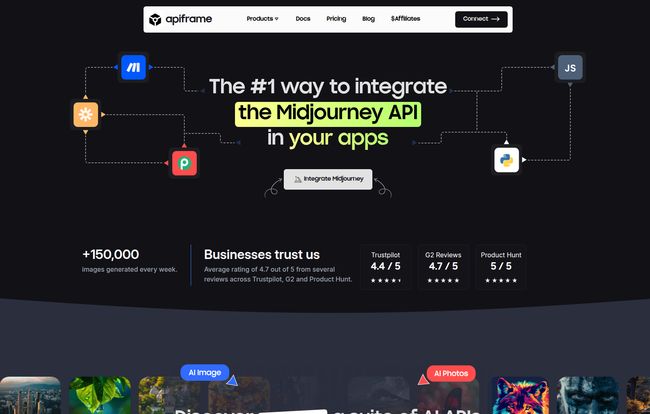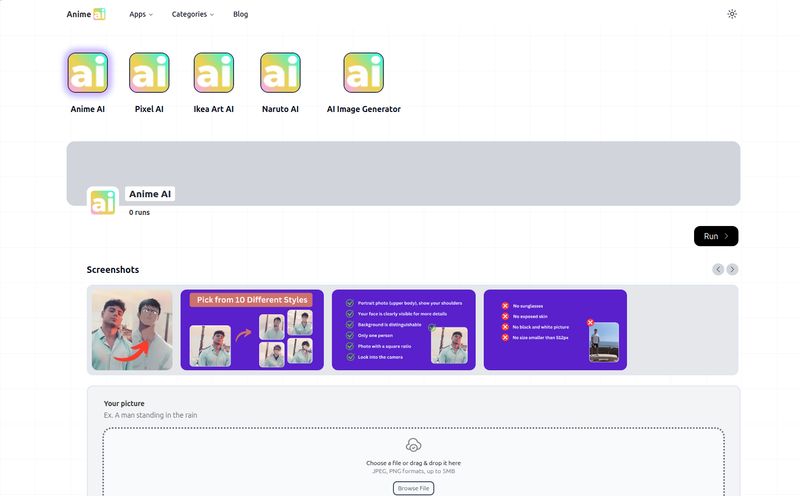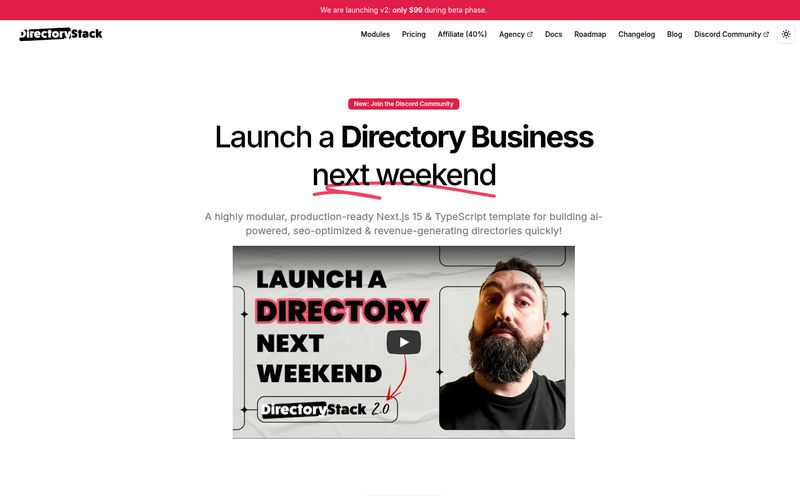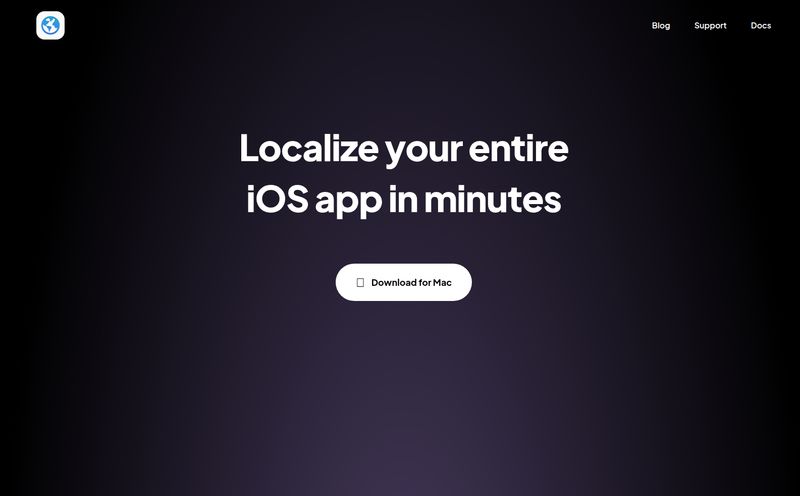If you’re in the marketing, creative, or dev space, you've probably felt the AI whiplash. One minute we're just getting used to writing prompts, the next we’re trying to stitch together five different AI tools with digital duct tape and a prayer. The biggest headache for me? Midjourney. I love the images it creates—truly breathtaking stuff—but it’s always felt like this amazing art studio locked away inside a Discord server. Getting those images out and into an actual workflow? Ugh. It's a pain.
I've lost count of the number of conversations I've had with fellow SEOs and developers about this. We've all fantasized about a proper Midjourney API. Something to plug directly into our apps, websites, or automation flows. So when I stumbled upon a platform called Apiframe, which claims to offer exactly that (and a whole lot more), my curiosity was definitely piqued. Is it the holy grail? Or just another tool promising the world? I had to find out.
So, What Is Apiframe, Really?
Think of Apiframe not as a single tool, but as a master key. It’s a platform that holds a whole suite of AI APIs, designed to let you plug incredible creative power directly into your projects. We're talking AI image generation, AI-powered photos, video creation, music generation, and even face swapping. It's built to be the connective tissue between your great idea and the powerful AI models that can bring it to life.
The whole point is to take these amazing, but sometimes isolated, AI technologies and make them accessible. Whether you’re writing code for a new SaaS product or building a no-code workflow to automate your social media content, Apiframe wants to be your go-to hub. And frankly, it's a compelling pitch.

Visit Apiframe
The Elephant in the Room: The Midjourney API
Alright, let’s get to the main event, because this is what probably brought you here. Apiframe offers a Midjourney API. But here's the crucial detail: it's not an official API from the Midjourney team. What Apiframe has built is a clever and robust wrapper. Essentially, they handle all the complicated backend stuff—interacting with Discord, managing the bots, processing the jobs—so you don't have to. You just make a clean API call, and you get your image back.
Some purists might scoff at this, but from a practical standpoint? I think it’s brilliant. Building your own reliable scraper or bot to do this is a nightmare. It’s fragile, it breaks all the time, and it’s a massive resource drain. Apiframe has done the dirty work for us.
And here’s a pretty killer feature: you don't even need your own Midjourney account for it to work. They manage the accounts on their end, which simplifies things immensely. No more juggling Discord logins or managing subscriptions in different places. You just use their API, and the magic happens. For anyone who has tried to automate Midjourney before, this is a huge weight off the shoulders.
It’s Not Just a One-Trick Pony
While the Midjourney API is the headline act, it would be a mistake to think that's all Apiframe does. It's more like a festival with multiple stages. Here’s a quick look at the other APIs on offer:
Other AI Generation Tools
Beyond Midjourney, Apiframe provides its own APIs for generating images, videos, and even music. This is great for rounding out your creative toolkit. Maybe you need a quick background track for a social media video or a specific style of image that other models are better at. Having them all under one roof, accessible with a similar API structure, is just... efficient. It cuts down on the learning curve and the time spent hunting through different API documentations.
The Faceswap API
Okay, this one is just plain fun, but it also has serious applications for personalized marketing and entertainment. The Faceswap API lets you, well, swap faces in images. It’s surprisingly accurate and opens up a whole world of possibilities for creating custom avatars, memes, or unique ad creatives. I've seen some agencies do some really clever things with this kind of tech for personalized campaigns.
Integrations for the No-Code Crowd
This is where my marketing brain gets really excited. Apiframe isn't just for the hardcore developers who live in a terminal. They have native integrations for platforms like Zapier, Make.com, and Pabbly. This means you can create automated workflows without writing a single line of code.
Imagine this: A user fills out a form on your website. Zapier grabs that info, sends it to the Apiframe API to generate a personalized image with their name on it, and then automatically posts it to a social media channel, tagging them. That’s the kind of high-touch, automated marketing that used to require a full dev team, and now you can build it in an afternoon.
Let's Talk Money: Apiframe Pricing
Pricing is always the million-dollar question, isn't it? Or in this case, the $39 question. Let's break down Apiframe's plans. It seems they operate on a monthly subscription model based on the number of image credits you need. One thing I appreciate is that they're pretty straightforward about what you get.
| Plan Name | Price (Monthly) | Who It's For | Key Features |
|---|---|---|---|
| Basic | $39 | Hobbyists & Experimenters | 900 image credits, all core APIs, no-code integrations. |
| Starter | $199 | Development & Testing | 5,500 image credits, all core features. |
| Growth | $399 | Growing Projects | 11,000 image credits, all core features. |
| Scale 1 | $2,499 | High-Volume Use | 120,000 image credits (around 500/day). |
In my experience, the Basic plan is more than enough to play around and see if it fits your project. The real value starts kicking in with the higher tiers if you're building an application or a service that relies on a steady stream of generated images. The main drawback? There's no free trial, though they do mention a paid trial is available, so you can dip your toes in without a big commitment.
One final technical goodie that's worth the price of admission for serious projects: your generated images are hosted indefinitely on a private CDN. This is a bigger deal than it sounds. It means you get fast load times and you don't have to build your own complex (and expensive) image hosting solution like an S3 bucket. Apiframe handles it. Simple.
My Final Thoughts
So, is Apiframe the perfect solution? Nothing is ever perfect. The fact that the Midjourney API isn't official might give some large enterprises pause. And the pricing can climb if you have massive volume needs.
But for the vast majority of developers, marketers, and entrepreneurs out there… I think this is a fantastic platform. It solves a very real, very annoying problem in the AI space. It brings powerful, disparate tools under one roof and makes them accessible to everyone, regardless of their coding ability. It’s a bridge, a translator, and a toolkit all in one. It turns the chaotic, exciting world of generative AI into something you can actually build with. And for that, it gets a big thumbs-up from me.
Frequently Asked Questions
1. Is the Apiframe Midjourney API official and legal?
It's not an official API released by Midjourney. Apiframe provides a 'wrapper' API, which means they manage the interaction with Midjourney's Discord-based service on the backend. It's a widely used method for providing API access to services that don't offer one natively.
2. Do I need to have my own Midjourney subscription to use Apiframe?
No, and that's one of the big advantages. Apiframe manages the necessary Midjourney accounts on their end, so your API plan with them is all you need to start generating images.
3. What are the no-code integrations good for?
The integrations with platforms like Zapier and Make.com are for automating tasks without code. You can connect Apiframe to hundreds of other apps. For instance, you could automatically generate a blog post image when you publish a new article in WordPress, or create personalized welcome images for new customers from a CRM entry.
4. What happens to the images I generate?
Apiframe hosts your generated images on a private CDN (Content Delivery Network). This means the images are stored securely and delivered quickly to your users without you needing to set up or pay for separate image hosting.
5. Is Apiframe only for generating images?
Not at all. While the Midjourney and other image generation APIs are a core feature, Apiframe also offers APIs for AI video generation, AI music generation, and a Faceswap API, making it a comprehensive creative AI platform.



